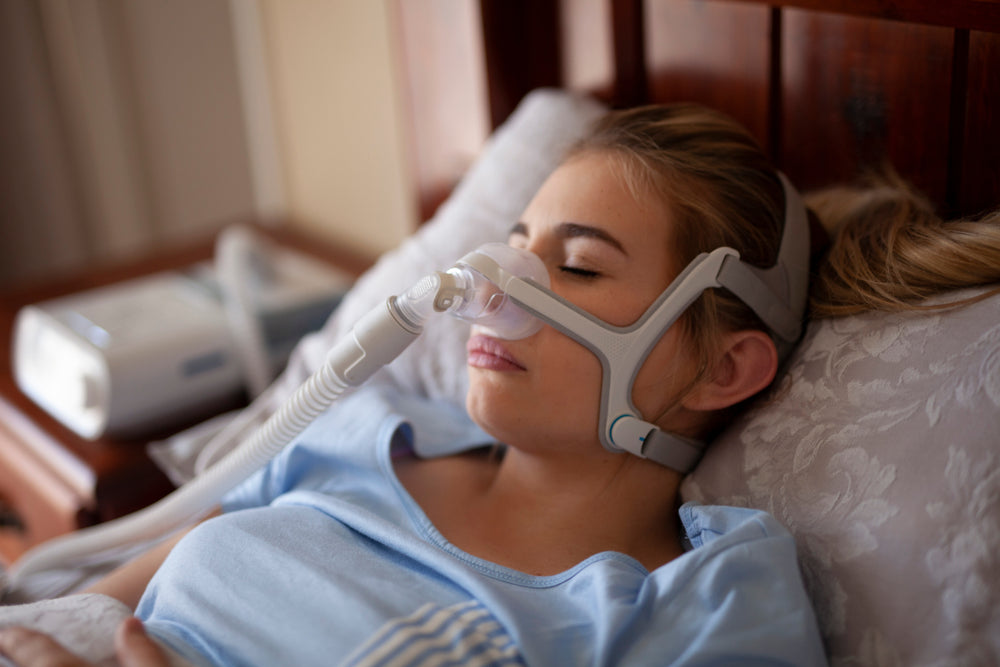Sleep apnea is not a new medical issue, and thanks to advancements in medical science, there many options available when it comes to treatment. You can even take care of the whole process at your home with ApneaMed—from ordering a home sleep apnea test to purchasing CPAP equipment for sleep apnea treatment.
However, it took some time to reach this point. To help highlight how far sleep apnea treatment has come below is a short history of the CPAP machine and the technology that allows millions to live their lives more comfortably and healthily.
Treatment Of Obstructive Sleep Apnea Before CPAP Machines
Before we jump into the invention of the CPAP machine, let's look at where obstructive sleep apnea was before this life-saving technology.
Prior to the non-invasive treatment of sleep apnea with a CPAP machine, for those with severe obstructive sleep apnea, surgical intervention was the most common treatment option. This surgery would remove the section of your respiratory system that had been identified as the source of your sleep apnea issues. However, sometimes that wasn't enough, and a permanent tracheostomy would need to be placed for some patients with severe sleep apnea.
As you might expect, these surgeries were not only highly invasive but could leave the recipient compromised for life, especially if a tracheostomy was performed. It wasn't until the early 1980s that the less invasive idea of continuous airway pressure treatment was explored.
Idea For CPAP Machine Started As A Dog Breathing Treatment
It may sound a little funny, but early CPAP treatments started with dogs who struggled with respiratory issues. This research was begun by Eliot Philipson in 1970, but it wasn't until 1976 that Colin Sullivan joined Philipson in his project. Sullivan is credited as the inventor of the CPAP machine, and he first got the idea by testing positive airway pressure on a dog patient.
There are specific breeds of dogs that are notorious for having breathing difficulties, such as bulldogs, pugs, and boxers. To help open up the airway, Sullivan used a vacuum cleaner set to blow air out as the first version of a positive airway pressure machine. The experiment was a success, and Sullivan began to refine his research until he was approached by a human patient who wanted another option than an invasive tracheotomy.
Early CPAP Machines
The first CPAP machine was actually a paint compressor that had its airflow reversed. Tubing was attached to the compressor, which was connected to a face mask, which was a pretty far cry from modern CPAP masks. As you might expect, the machine was incredibly loud, and the airflow pressure was not consistent, sometimes making it tough to breathe. But, after seven hours of sleep, Sullivan's patient reported feeling aware and alert for the first time in many years.
From those early days of cobbled-together machines, CPAP machines and associated accessories have steadily improved in comfort. Though, it did take until 1990 for the first self-sealing mask—called "the bubble mask"—was produced by Philips Respironics to increase the wearer's comfort.
What CPAP Technology Looks Like Now
From testing airway assistance methods on dogs with vacuum cleaners to today's sleek technology, there is a clear record of improvement in comfort and control when it comes to CPAP treatment and machines.
Let's take CPAP masks look and work like now. There are multiple styles of masks, from small nasal masks to full face masks, allowing you to choose what type of mask is both most comfortable and effective for your needs.
Also, CPAP technology has changed. Even though we definitely don't sell converted paint compressors as CPAP machines, some individuals still find continuous positive airway pressure (CPAP) machines uncomfortable, as the pressure is kept at the highest level the person needs all night long. Being blasted with high air pressure can make falling and staying asleep in the lighter stages of sleep difficult. However, thanks to advancements in sleep technology, there are other options.
An excellent innovation is automatic positive airway pressure (AutoPAP) machines. With an AutoPAP, the airway pressure starts light to help accommodate your lower pressure needs. As you fall into a deeper sleep, the machine will automatically adjust to provide you with an increased amount of positive airway pressure to keep your respiratory system open.
Also, another benefit of the AutoPAP machine that we provide is that it comes with a built-in humidifier. As you might expect, having pressurized air pass through your nose and throat can be very drying. To counteract the issues that can arise from being dried out—i.e., nosebleeds, cottonmouth, increased tooth decay, etc.—the water tank in the AutoPAP is able to humidify the air going into your airway.
CPAP treatment and technology have come a long way and will continue to evolve and provide people with greater comfort, like with the AutoPAP machine. If you would like assistance in ordering an AutoPAP machine, a test kit to check for sleep apnea, or other CPAP supplies, feel free to contact us today.

